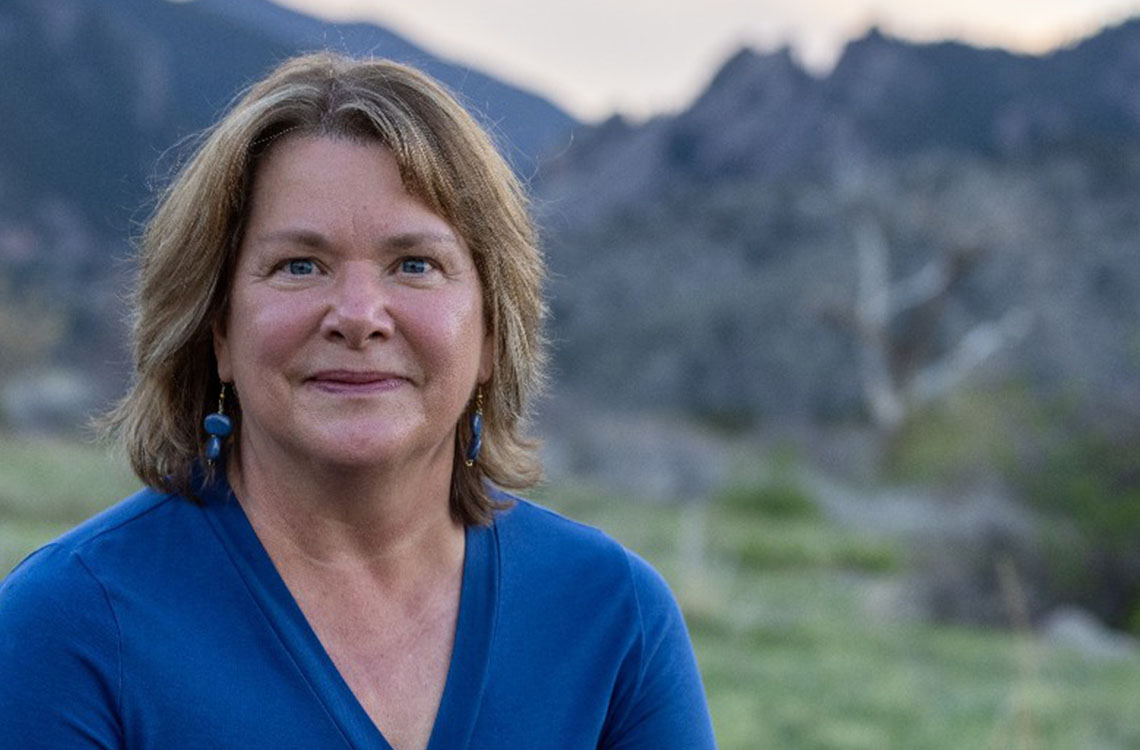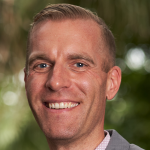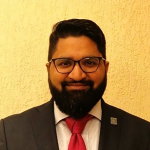Linda Rad: Leadership And Communication In The Post-Pandemic Business World
Leadership and communication are two skills that are in great demand in today’s post-pandemic business world. What can you do to ensure that both skills are leveraged fairly and equitably for both your business and your employees? In this episode, Sam Reeve & Char Miller discuss the mechanics of both with Linda Rad, Executive and Team Coach, Human Resource and Organizational Development Consultant and Facilitator at Envision Leadership Consulting. Linda talks about the changing role of leaders in today’s fast-paced business world and what needs to be done to address the gap between leaders and the people. Tune in and learn more leadership lessons from Linda.
—
Linda Rad: Leadership And Communication In The Post-Pandemic Business World
Welcome to show. It’s so good to have you here, whether you’re one of our very loyal readers or maybe you’re a newcomer. I want to give you a bit of an idea of what we do here at the show if it’s your first time. You can think of this as a mastermind of leaders. We get together every week. Our goal is to help create workplaces where people will thrive. We help organizations and managers help reward employers and employees, and create places where customers will love. We have a very special guest, Linda Rad. She’s here with us.
I’ll introduce you to our other hosts. Other hosts include Char. She started as an HR expert. She worked in the corporate world for many years before deciding, “I want to branch out and work for myself.” She is now the Founder and CEO of Rocky Mountain Health Advocates. It’s lovely to have her here. Enjoy the sunshine down in Mexico.
I’m trying to manage my employees from a far. Our topic is going to intriguing to me. The remote world is a whole new dynamic.
We have Sam, the Founder and CEO of CompTeam. He is a compensation expert and he helps so many companies restructure all day, rewards programs and compensation programs, so that they can function a lot better. He’s also the creator of this forum. Let me introduce you to Linda Rad.
We are so excited to have her here. We were chatting with her a little bit before. We wanted to get every bit of information out of her that we could so that we could cater this session as best as we can. Linda is an Executive and Team Coach, HR, OD consultant, and leadership developer. Through her company, Envision Leadership Consulting, she helps create a culture change throughout different companies.
She does this through not just coaching, but also planning, emotional intelligence workshops, assessments and much more. We are talking a bit about coaching managers in a hybrid environment. We’re taking it from a different perspective, so I’m very excited to have Linda here. She’s been here before.
—
It’s great to have you here, Linda.
Thank you so much. I’m glad to be here.
To introduce you to our readers, can you tell us a little bit about your journey and how you got into the consulting world, where you’re at now and helping companies with their leadership and so forth? How did that all happen?
I’ve been working on my own in my own business, Envision Leadership Consulting. It’s something I always wanted to do and had every excuse not to do it. After I learned a little bit about my own BS and the stories, I told myself, I decided to step into it. I did and it’s been the best decision I’ve ever made. My focus is on helping both leaders and individuals with what their purpose is, what their passions are, what their talents are, and how that can help the workplace culture.
I do that through team coaching, leadership coaching, consulting and workshops. It’s been the best decision I’ve made. I have a long background in organizational and leadership development, and bringing coaching programs into organizations. I’m continuing to do that even in my spare volunteer time. My education has always been in HR, OD and organizational leadership.
As we all know, there’s been a revolution as far as not just on the business side, but also on the employee side about, “What are our passions? Where should we be focusing our attention in the future and so forth?” Getting guidance like yours is quite important. Having those critical discussions on reframing our mindset on how we reach out to our employees, how do we change our management style to involve the new framework, and then also, how are our customer preferences changing for businesses as well. This is quite important to go through all of this. Tell us what are some of the high-demand items that you’re seeing from your clients and navigating this change?

Leadership And Communication: How do we navigate change? How do we move through this in a way that is both equitable, as well as empowering for our employees while still getting the business results that we really need?
I think exactly that, which is how do we navigate change? How do we move through this in a way that is both equitable as well as empowering for our employees while still getting the business results that we need? How do we make those changes? Not just through a top-down approach, which is the old-fashioned way.
As far as what I’m seeing with my clients and different places in the market is managers are struggling with their philosophy on bringing people back to work, how to manage in the hybrid environment, and then also those remote workers. There are a lot of managers who are struggling with this change. They are in their old mindset of, “If I have people back in the office, I can use that old skillset of mine in measuring performance and understanding who’s ready for promotion.” All these things are in their old toolbox that is based on the reality of people being in the office.
Now, that we have three different categories of workers. We have those that are in the office full-time. We have a hybrid workforce. People that are in and out of the office and those that are fully remote. Also, part of that fully remote subcategory is those that are global nomads that are traveling in many different places across the globe as we’re seeing from Jules and Char is a good example. There are different environments for managers to be familiar with. That disrupted their overall previous approach, as I mentioned in that toolbox. How are you seeing managers deal with this situation?
It’s all over the place. Some people are relying on their old skills of commanding control in some ways. Maybe it worked in the past, but we’re all realizing that there are tons of changes. We talk about the VUCA environment. This change calls upon us as leaders to get clear and focused about what’s most important and what deserves our attention most. That’s the question that we have to struggle with first and not just once but multiple times.
What is the first step? How do they find out or discover what is important? What should they be addressing as the first pieces in this and ensure that they have fairness and equity across their workforce and then they can manage correctly in these different environments, whether hybrid, fully remote or in the office?
The first thing is understanding what’s happening around us. Doing some assessment and looking at what’s the external and internal environment, and what is it that we need as far as results, and what is it that our employees need as far as work environment. It’s changing. When we talk about fairness versus equity, different things come up.
Today's changes call upon us as leaders to get clear and focused about what's most important, what really deserves our attention most. Share on XWe try to marry that with the business needs. Getting clear about both the headwinds and the tailwinds and finding out what’s a goal. “If the goal is to do this, who do we have onboard and what are their needs? How do we accomplish this together?” A lot of that comes through engaging and empowering our employees to be part of the solution.
I often talk to clients about this, I call it the three-legged stool, which is the company’s needs, customer’s needs, and then your employees’ needs. There are all these different pieces and if they’re not balanced, you’ll get a wobbly stool. I usually say, “We need to understand who our stakeholders are and then talk to our stakeholders in this new environment.” You mentioned reaching out to employees and understanding their new needs, how do we do that?
First of all, it has to be a lot more intentional, especially in this hybrid environment, and maybe even in the physical environment. Regardless, if somebody is in the office or they’re working remotely, or it’s a hybrid situation, how do we set aside intentional time to be present and ask questions and listen. That’s the role of the manager, the role of the leader is to make sure we are intentionally building time to have those conversations.
Imagine depending on the size of the company that can come in and a lot of different forms. We’ve talked about doing those state interviews with our employees or managers are interacting directly with them and asking critical questions. “What is important to you? What do you like about working here? What are the things that you don’t like about working here?” Different things like that. I imagine this can still be done in some of the largest organizations, but are there other techniques like surveys or things that you’ve seen work well?
Depending on the environment. For smaller companies or organizations, it may be that face-to-face conversations are the best way to go. Whether it’s a walking meeting and having a conversation and doing some coaching or getting input, or whether it’s online on Zoom or Microsoft Teams, but it’s that intentionality of creating that environment. That’s important.
Besides setting up the time being present, deciding what’s the best methodology, maybe it is a survey, a focus group, engaging face-to-face, one-on-one with different people. In this environment, face-to-face is always best. However, it’s not practical as much right now. How do we create that same sense of safety, especially when we have FUD environment? It is fear, uncertainty and doubt. Especially when people can feel isolated and they don’t feel like maybe they’re in on all the conversations or they’re able to provide input, those things come up.

Leadership And Communication: For smaller companies or organizations, it may be that face-to-face conversations are the best way to go.
It’s intentionally creating that environment wherein the workplace culture, whether it’s virtual or not, is important. We’re always trying to balance work and relationships. If it’s all work and no relationship, we pay the price. That’s the same if it’s only a relationship and no work. We’re trying to achieve that by being in a relationship with our work and task orientation, but that takes intentionality.
We’re talking about understanding the stakeholders, employees, there’s also the customer and what the company can do. Let’s talk about the customer, because Char has some unique experience here, especially with her business in understanding what is needed. We need to look about how the customers’ needs have changed. We’ve talked about the safety aspects. Whether we have people that are hybrid or that need to show up. Char, you have locations where people come in and they come in for health screening. Can you tell us about how you’ve seen the customer needs change through this time?
My company deals with health advocacy and health screenings. It’s been a very interesting transition to try to provide services, be it remotely through telehealth and/or face-to-face, and then also try to offer the remote aspect. Also, the federal and the regulatory changes with some of our laboratory testing. To support my employees through the change, every day we have a change.
Every single day, there’s something new and changing in my industry. Communication has been absolutely vital. We have an approach of being one million percent transparent so that our employees never feel good or bad news. At least they know they’re always in the know, “This rule came out. This law change this. The laboratories accept this. They don’t accept that.” We are almost to the point of default of transparency, but my leadership has to have a lot of one-on-ones.
Although, I’m down here in Puerto Vallarta, I or my partner, Bruce, do go back almost every month or every other month as owners of the company to have that face-to-face interaction with our employees, so that they know that we’re not on some long-haul vacation down here. We’re working here day-to-day, every day, talking to all the labs and our partners and physicians, and then we go down and have face-to-face conversations.
My leaders are expected to have one-on-ones with their employees every week and my director is expected that the same, not only face-to-face drop-ins but also one-on-one meetings. We utilize the TMA, which is our sponsor to have some structure and coordination around what those conversations look like around positive psychology and positive coaching. It’s not all about negativity and negative change. We’ve found a sweet spot in the science of what we’re using with my company. Although, we’ve been going through some hardship out of our control but at least my employees know where they stand. That’s helped with our employee engagement.
We're always trying to balance work and relationships. If it's all work and no relationship, we pay the price. That's the same if it's only relationships and no work. Share on XYou pointed out a couple of good things there, Char. You mentioned that some of the customer preferences are changing. They’re not coming into your sites anymore. They’re asking for some remote treatment, so they don’t have to come in. You’re making some adaptions there. The other themes that you’ve mentioned that I see such as transparency, more transparency in what’s going on in the company and communication. That’s something that’s been amplified over the past several months. Thank you for bringing that up.
I can’t tell you it’s been easy because there are employees from a retention standpoint that will leave, if we’re having to reduce hours or if we’re maybe needing to readjust our locations, or maybe moving our business strategy and some employees don’t like that ambiguity of their future career momentum. As you know, Sam, we’re very generous with our pay, but we’re also not necessarily the company that’s the most consistent with our business.
We’ve dealt with some fallout. Some of our most loyal employees know that if they hang in there with us, they’re going to be well paid for part-time hours and have a great opportunity, but that the way I coordinate talent management strategy to support them through that change has made a difference. My perspective around that has changed from where my corporate HR world, the way we handle change, and all of the processes, I would have a completely different recommendation now than I did several years ago. That is also very much transformed because I’ve been a real business owner.
That’s the important piece as Linda was talking about is understanding and navigating that changed management. One thing that I want to bring up is that the third leg of the stool that we’re talking about is the company. When I talk about this is our capabilities and how that is changing in this particular environment. We’ve been talking about how managers had the skillset or they have the toolbox based on having people show up in the office and now they need to get some new tools for the hybrid and remote environment.
Linda, your point, you mentioned, we need to do an assessment. We need to understand how the capabilities that we have. I imagine you’ve dealt with some clients that have determined, “We need to ramp up our management training, and coaching around our managers to ensure that we have a consistent approach of how we treat people that are in the hybrid and remote environment, and also, that are here in the office. How would you help clients go down that path?
With all of this change, there are some key things we have to focus on. One is it is always relationship first. We have to have a connection before we can give a direction. Checking in, allowing that space, especially in a virtual environment is so important because we can get going so fast, we want to get right to task. I’m guilty of this too. Taking a step back and making sure we understand. For some people, you don’t even have the physical site, it might even be only over the phone. You don’t know how some of your workforces are doing how they’re holding up and what’s happening for them. Having that connection is critical. Our ability to listen during this time has been diminished.

Leadership And Communication: The number of ways that we’re connecting is greater than it’s ever been but that doesn’t mean that it’s as effective.
Can you dive in a little bit more on our ability to listen has been diminished?
Think about from the time you got up this morning, the different types of social platforms or media platforms you’ve been on, whether it’s text, Slack, Instagram, Zoom Team meetings or whatever it is, the amount of ways that we’re connecting is greater than it’s ever been, but that doesn’t mean that it’s effective.
All of these things lead to overload and overwhelm and that’s why intentionally making the space and being present. We talk about three different levels of listening. The one we do the most is the internal where we’re thinking about the shopping list, Snapchat, our team or staff, maybe a customer complaint or whatever it is, all at the same time, and the person in front of us has no attention. It’s an internal listening dialogue that’s happening. Focus listening is on the person.
It’s not one social media platform that we have. Everybody is connected to their phones. We’re all distracted very much all the time and that doesn’t go for young people, older people like us also are constantly distracted. I love the phrase that you said, “When we’re moving so fast, you need to get to the task.” You need to copyright that phrase and write a book about it.
I am a living example of where my company is moving so fast and we’re trying to get to the task, but we’re always flying off the seat of our pants. My employees feel it and get worried and concerned, and if we’re not communicating, it leads to all kinds of HR problems from a foundational HR perspective.
Analyzing that psychology of what’s happening with our society and analyzing how to best listen, not only through technology but also the face-to-face. It’s a hybrid. It’s a combination of multiple avenues of how we communicate. We need to layer them on to each other and have a strategic approach and how we’re listening, instead of flying by the seat of our pants every time.
We have to have a connection before we can really give a direction. Share on XGoing back to my old experience in doing radios and how you change the channel, so you can communicate. Is that what we need to do nowadays as companies? Do we need to select the platform that we’re going to do our official communication through to ensure that we have that transparency and people are listening or is it important to have a choice to ensure that we’re doing multiple channels and to provide that choice to our employees? What are your beliefs on that, Linda?
I’ve seen quite a few different things. I’ve seen companies that have many different channels and they allow that complete choice. When there is not a clear communication channel for how you can get that transparent and clear information, then it can be confusing. We talked about the FUD, the fear, uncertainty, and then the doubt missing out on important conversations when you’re in a virtual workspace is a real thing. How do we get clarity about, “Here’s how you’re going to find out information. Here’s how you’re going to be able to ask questions?” I’m reminded of the CEO who fired 900 employees.
It’s all over social media and he did it on a Zoom.
There was no ability to ask questions or to find out exactly what else this might mean.
He said something to the effect of, “If you’re on the Zoom call, you’re the unlucky ones that are going to lose your job. HR is going to be sending you a letter soon.”
It’s not a great example of communication. Effective communication starts with people first. That acknowledges the person in front of you and gives them the attention that they deserve, and then the sharing information. “What’s the clear communication channel?” There might be multiple other channels that the company supports for colleagues, teams and supervisors to use, but having a clear communication channel can help reduce some of that fear or the feeling of being left out.

Leadership And Communication: Having a clear communication channel can help reduce some of that fear or the feeling of being left out.
We’re a very teeny company and I’ll be very transparent. We’ve faced some federal laws that have changed our industry, but I also trust that my director is having a lot of one-on-ones with our employees all the time. In addition, to our weekly meetings, our staff meetings, and then the director and the managers having those conversations. We will have disgruntled employees with some of the changes that are coming up soon, but at least I do know that we have been 100% transparent. We’ve been talking to everybody and letting them know what’s going on.
Also, we have GroupMe, which is another form of online communication, so that all of our employees have different avenues of how they’re going to hear information. I don’t know exactly about that company. I haven’t searched it yet, but I got the impression through whatever the news is. It sounded so cold as Daniel mentioned, “They may not have had all those other avenues so that they could that senior leadership was communicating directly with the frontline leadership and frontline staff.” Maybe that’s why the reaction was so negative and hit the social media platform impactfully.
For all of us as leaders working with people, having high-touch communication in this hybrid environment is critical. Otherwise, it lacks a human element and it increases the isolation that a lot of people feel. High-touch communication is key as well as being present, listening and asking questions.
That is part of the reason why, Linda, I hired a director that had that high compassion, emotionally intelligent, high empathy in communication approach that I knew that in these hard times that she would be able to do that. That took a very high level of competency, talent, drive and ability to do that with my employees. I knew because my industry changes every day that I needed that talent. I trust my director to do those things.
I often feel that the senior leadership working in more of a higher-level executive corporate company world. Sometimes we look at hiring senior leaders about their outcomes, numbers and return on investment, but we forget the emotional intelligence, the ability to build relationships, build that credibility, honesty and authenticity with your employees.
To me, this is the people side of the business, but often major companies tend to put on the back burner, but now more than ever is so important to be able to have that ability to help your employees cope through these challenging and difficult times, not only as an operation but also in their personal lives. It’s such a critical element in hiring the right leaders to support your team.
As leaders working with people, having high touch communication in this hybrid environment is critical. Share on XNot everyone is a leader like Char, not as transparent, they don’t have that emotional intelligence that we’re talking about. The question is how do you then handle leaders who are not having candid conversations with their employees and ended up having a lot of turnovers in their business because a lot of them still don’t seem to realize this disconnect.
A leader of leaders, one of their primary functions or jobs is to develop in coach leaders. Being a role model and letting the leader see what the tools are asking questions, being present, and modeling it is critical. Being clear about what it is that’s important because what we focus on is what we get. If we only focus on that balance of work and not relationships, then that’s what we’ll get. That’s what’s rewarded. We want to coach those leaders about having relationships and developing their own team and people.
You can ask their team members too, “What is it that they need? Are they clear on their expectations? Do they have the resources they need? Do they know what’s expected of them? Do they feel like the business scale up? Do they feel like they have the opportunity to learn, grow and develop? Do they have meaningful connections at work?” You can ask those questions and then get clear about what’s important. That balance between work and relationships. For too long, a lot of leaders have felt like and have been evaluated based on the business results only and not the relationships.
That’s a critical piece. One of the things that I’m seeing is the expanded use of coaches across companies. Leaders have found that we need to bring up the skillsets of certain managers across the organization. To Monica’s question here, once we find out that there’s a gap or a skillset gap, that’s indicated by turnover or discontent in the ranks and those under the managers, leadership needs to take action on this.
It’s not pointing out the problem to that manager and saying, “There’s something going on in your organization. You’ve got to figure that out.” We need to help them come to a holistic solution. What I see now is signing them up or getting them a coach that can help them up their skills. In a situation like this and bringing managers’ skills up, how would you help a manager up their game?
When we’re talking about coaching, we’re talking about transformation. We’re talking about change. This is a change effort. The person has to want the change. They have to want to change. I have worked with teams and clients, who either want to change or don’t want to change. Sometimes that information, some of the assessment can help them to realize that their intent and the impact is very different. First of all, making sure they want to be a part of this.

Leadership And Communication: Having a clear communication channel can help reduce some of that fear or the feeling of being left out.
Coaching isn’t something that’s done to someone. It’s a partnership. It’s a designed alliance and a co-creation of what this person wants more of. Maybe they want less of. Self-awareness and self-efficacy are the leading characteristics of effective leaders. Helping that manager articulate what it is that they want. “What are their values? What is their vision? What is their legacy? How has that matched with how they’re being perceived and bringing in some data there?”
Linda, you said another word that I love that has struck me, which is designed alliance. It’s not about the bureaucracy and politics. It’s about the designed alliance in a positive setting that produces the productivity relationships to move the company forward.
It’s what we’re creating. We’re creating this safe space and container that a person can be who they are, to say what they need to say, and to feel like they’re not being judged. You start to understand some of their needs, interests, fears, hopes, and then you help create a path forward for them to see their best self. What are the changes that they want to have happened so that they can have the impact that they want to have?
Honestly, I haven’t met anybody in my coaching who has said, “I want to be a tyrant. I want all employees to quit. I want them to have stress because of me. I want them to quit.” That’s not their intent, but when they realize the impact is not what they want and they see their higher self, then there’s room and space to create that path forward, both with teams and with managers.
Don’t you think that your approach of what you talked about philosophically has transformed in the last many years? Everything was more traditional performance management and expectations. You get punitive results, not only with your raise, but also you get written up or you get a doc on your performance or whatever. What you’re talking about is completely transformative. It’s about how can you be your best self. How can you bring your very best ability to this company? I champion you in a very positive light. Don’t you think it’s changed even from many years ago in HR?
In our companies, we had our own designed alliance.
When we're talking about coaching, we're really talking about transformation. We're talking about change. Share on XI have the chills because that is what I call myself, HR with a heart, if you remember my old saying, and that’s what I meant. You’ve got to have a heart about how you take care of your people. That’s what we’re talking about.
With all the change that’s happened and the stress, we become not our best selves. We engage in habits and communication that doesn’t reflect who we want to be truly.
One of the challenging things for HR professionals that are reading this is how you coach and mentor your executive team to embrace this philosophy. Your HR people, OD people, cultural professionals that work in the companies, my personal challenge, even now is how do you help your CEOs, CFOs or your money-tight guys and gals that only focus on that, but not this. That’s a language we need to learn how to communicate.
Part of the big piece is that in the old mindset, leaders and managers thought, “I went to business school. I completed college. I’m supposed to know how to do this stuff.” They get into the environment and they don’t feel like that they’re supposed to ask for help from outsiders. A lot of companies also have the old mindset saying, “We’ve got learning and development. We’ve got these. We have HR and they help you figure this out and coach you on doing that stuff.”
We’re talking about a more human environment more than ever in the past. We’re not talking about, “How do you hire, fire and do promotions?” Those mechanics that are a part of the talent equation of old. We’re talking about how to have effective conversations with critical stakeholders. How to be more influential? How to up my game and develop as a leader?
A lot of times, leaders or managers internally don’t want to hang out their dirty laundry to HR or in learning and development and have these critical conversations. It puts them in a stance of that to be extremely vulnerable. A solution like that, they have to trust that person to be able to hold that information in the way that they would like.

Leadership And Communication: When they realize the impact is not what they want and they see their higher self, then there’s room there’s space to create that path forward, both with teams and with managers.
By getting an external coach, you can connect with somebody that has your same style of communication that you can foster trust and that confidentiality that can get you to your next game. I had this struggle years ago and I never asked for help and didn’t have a coach. Now, I have five different coaches for different parts of my business. I got a business coach, consulting coach, presence coach, Char and Jules. It’s an important piece that to have in our lives as we move forward.
We’re helping each other, we can all learn so much from one another, and that’s when listening comes in.
There’s a difference between professional coaches and leaders as a coach. Harvard Business Review did a study where they asked executives, “Are you a great coach?” Most of them said, “I’m a great coach.” They asked the people that reported to them, “Is this person a great coach?” Overwhelmingly, their team said, “No.” What they found is a mismatch and that there was almost like a consulting style of the leader where they gave them advice. They told them what to do. They told them, “Here’s what I would do if I were you.” They try to provide them with solutions and fix them. That’s not coaching.
For the leaders on your webinar, practicing being present and listening, and then asking questions to uncover the brilliance that is already there within your team members and help bring that out is what’s going to grow and develop people and make them feel engaged and want to stay. That’s what we’re trying to get to. How do we change the way we interact and engage with our teams so that we don’t have to be the technical expert? They’re the technical expert.
Some of our readers have mentioned as far as, “What if your leaders are resistant to coaching?” This is something I’ve come across. Pointing out the type of mindset, there’s a fixed mindset and a growth mindset. If any leader out there believes that they know it all and there’s nothing else to learn is going to be deteriorating in their environment. What’s happening in our culture and the globe is that change happens and it’s happening fast. To the extent that you’re not looking up for advice and not asking down the chain for advice too.
There are mentors that have been there, done that. Also, in our community, some of those new emerging professionals that are getting into the workplace have a lot of knowledge. We were talking about Snapchat that I haven’t adapted to and hopefully I don’t have to. There are pieces that are coming up of technology that we need to reach down and embrace our new employees that they have that knowledge and bring that into our mindset. That growth mindset is critical and we can learn from everyone.
It really takes some shifting in curiosity when we ask questions rather than tell people. Share on XWe have to, Sam. I swear I’m like, “What the hell? I can’t even log into all my different platforms and keep up with them anymore.” I also know that my employees are so engaged in all of that technology-wise. We have to keep up with it and it’s an opportunity. It’s a 3-way street or a 4-way street, we all got to help each other.
We have to help each other, not only from how old we are, from a technology standpoint and experience standpoint. Building that culture and that atmosphere where we all appreciate each other at an equal level. It’s not about your fancy title or your fancy pay, having a corner office, living in a cubicle or working from home. It’s an entirely new culture that is developing in our professional atmosphere.
I believe that we need to open our minds and be more open and have frank conversations about what’s going to help each other be the most successful. That’s why I love what you’re doing, Linda. Daniel has said, “You’re spot on.” There are various things that you’re saying that can resonate. You’re not a Millennial and I’m not either, but the whole psychological attitude about how we need to reinvent the way we communicate is going to be vital to our business or we’re going to die.
If there’s one book I could recommend for any of your readers who are, “I’m not sure what to do. I don’t know where to start.” It’s the book, The Coaching Habit by Michael Bungay Stanier. It is incredible. It’s an easy read. It gives you basically eight questions to use and when to use them. I give it to a lot of my clients who are leaders, who are trying to develop more of a coaching style and approach because, for some of us like me, it’s natural to tell when I talk rather than ask questions. It takes some shifting and curiosity when we ask questions rather than tell people.
Employees get shut down if they have an executive team that constantly is telling, particularly in the management meetings.
I do want to take a moment to acknowledge our sponsor, TMA. As we were talking through this conversation, understanding what the sentiments of what our employees are looking for. The TMA is an excellent tool to be able to understand that the different types of working styles and preferences of our employees. It has a great assessment that you can send out to your employees and they complete that. Through that assessment, you can understand how they like to be interacted with.

The Coaching Habit: Say Less, Ask More & Change the Way You Lead Forever
It’s not how good you do your job type of thing. It’s designed around having a comfortable dialogue and getting to know your people more closely and in a professional environment. If you’re interested in learning a little bit more about the TMA method, please reach out to me. I’ll send you a free assessment, so you can learn for yourself.
I’ve utilized this tool with my company and I’ve learned how to operationalize it. We utilize it in every area of recruiting, coaching, onboarding, offboarding, promoting, every single aspect of my former HR mindset, and we converted it into this new positive psychology mindset around talents and drives. It’s a phenomenal tool as long as you can apply it uniquely in your industry. Sam, you’ve got a whole team of us that are talent management experts that can provide that consulting perspective.
There’s a how to leverage these tools because TMA has not just a desktop software or SaaS software, they can use for your company that helps you run these assessments, but they also have online tools or mobile tools that you can use for the whole talent cycle. Char has used this in her business. She’s a professional. She does coaching around this. We have other people that can help you as well. As we are wrapping up here, Linda, for somebody to learn more about what you’ve been talking about and to reach out and connect to you to learn more about how you coach and the different services you provide, how do they learn more about you?
You could also go out to EnvisionLeadershipConsulting.com. You can connect with me there. My phone number is also out there. I’m happy to speak with anyone who’s thinking about a hybrid work environment, coaching or team coaching.
Go out there and take a look at Linda’s website.
I’m doing this on my phone but I got the link for it.
Examples of the future workforce as Jules is out traveling the world and doing work on the phone. We had a conversation about how the mobile environment has just amplified allowing people to work from anywhere they’d like. It’s been a wonderful conversation, Linda. Thank you so much for sharing.
Thank you so much.
Important Links:
- Linda Rad
- Rocky Mountain Health Advocates
- CompTeam
- Envision Leadership Consulting
- TMA
- The Coaching Habit
About Linda Rad
 My purpose, passion, and talents are focused on leading positive growth for the individual, team, and organization. A strategic collaborator and executive coach who facilitates transformational change through increased emotional and positive intelligence, strategic thinking, and a strengths-based approach.
My purpose, passion, and talents are focused on leading positive growth for the individual, team, and organization. A strategic collaborator and executive coach who facilitates transformational change through increased emotional and positive intelligence, strategic thinking, and a strengths-based approach.
Relevant certifications include:
Certified Professional Co Active Coach (CPCC) through Co Active Training Institute
Associate Certified Coach (ACC) through the International Coaching Federation
Executive Coaching Certification (ECCP) from Institute of Organizational Development
Organizational Development Certification (ODCP) from Institute of Organizational Development
Everything DiSC Certification Wiley Companies
Senior Professional Human Resource (SPHR) from Human Resource Certification Institute
Senior Human Resource Management Professional (SHRM-SCP) Certification through SHRM
Emotional Intelligence (EQi 2.0) through Multi-Health Systems
Emergenetics Associate Certification through Emergenetics International
Lominger Leadership Architect (leadership competencies)
Specialized Services
• Leadership and Team Coaching
• Organizational Development Consulting
• Team Building and Conflict Resolution
• Human Resource Consulting
• Expert Facilitation and Strategic Planning
• Retreats and Workshops (emotional intelligence, communication skills, leadership, innovation)




